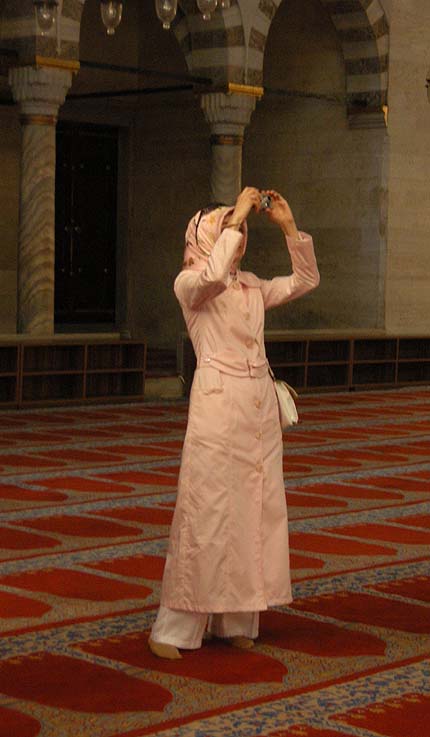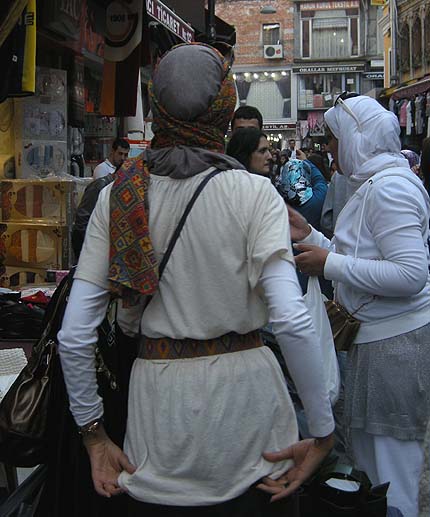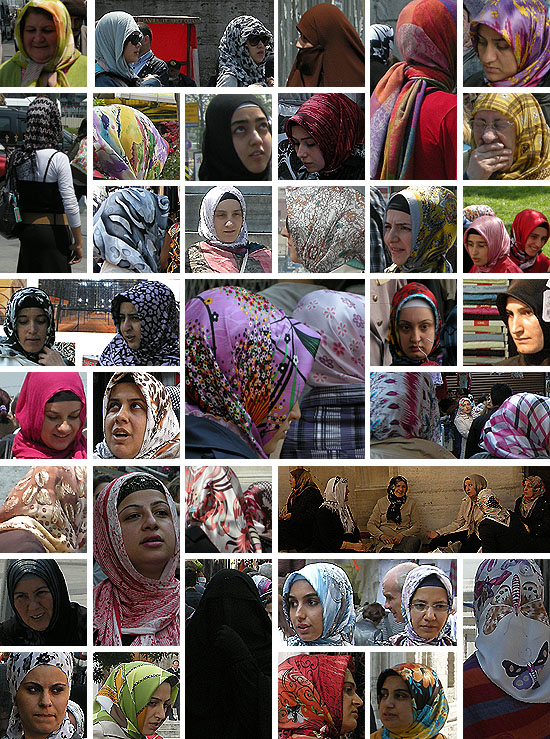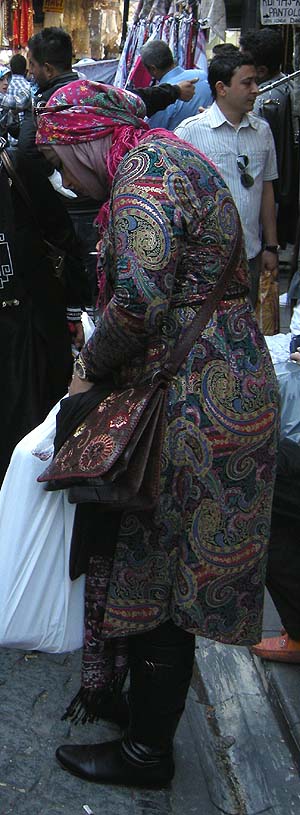
in all quantities, sizes, shapes, colors. The very first thing one encounters when exiting the arrival hall of the Istanbul airport is the poster of the Armine fashion company showing a very pretty young woman with a kerchief. And from then on the whole city is full of little, small, huge and giant posters, and on the posters wonderful women with kerchiefs. And not only on the posters. By the time I arrived to the inner city, I was completely enthusiastic. Kerchiefs became a fashion in Istanbul.
Der makām-ı Şūri Semâ’i (Mss. D. Cantemir 256). Savall: Istanbul, 3'33"

Four years ago we set out from here to Persia where I was completely fascinated by what an incredibly sophisticated fashion can be pursued with the strictly regulated black chador. The kerchief costume of Istanbul, on the contrary, had not made any particular impression on me, and it did not seem to be very different from what is usual at us.

Now, however, it is immediately striking how many women wear a kerchief. Not only the elder and the poor, but also the young, the obviously affluent and highly educated women wear it in mass, from the veil covering even the eye to the highly artistic and extravagant compositions. And they seem to find a great joy in it

Among the young people it is undoubtedly the Armine company to determine the trend: discreet, subtle pastel tones and floral patterns, natural, soft materials. They do not sell only kerchiefs, but whole collections, dresses, accessories, everything harmonized with everything.

In addition, there are many, not only young people but also elder women who, taking full advantage of the wide range of possibilities, wear similarly sophisticated, but individually configured kerchief and dress compositions.

I guess I have never ever seen a fashion which would have showed in such a fabulous wealth and diversity in how many ways one can be pretty and feminine.




